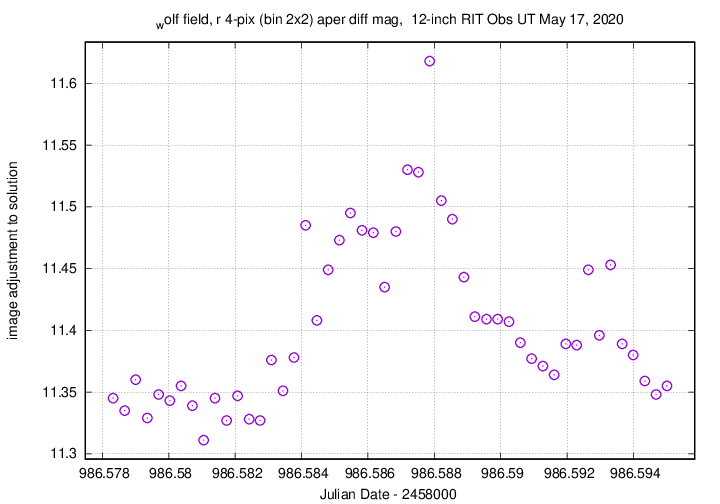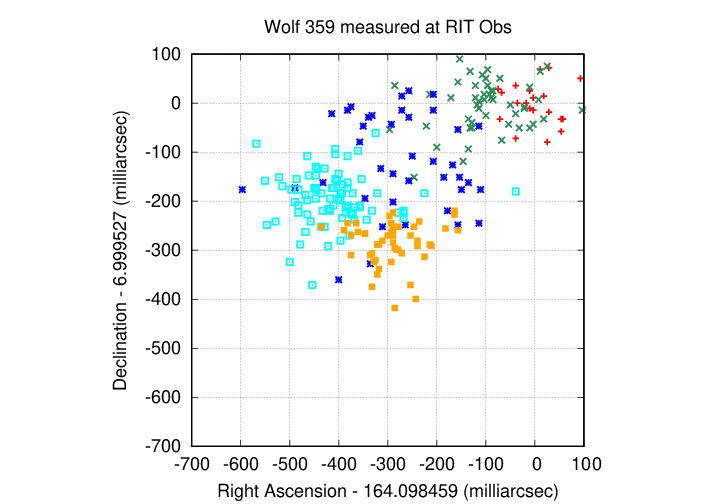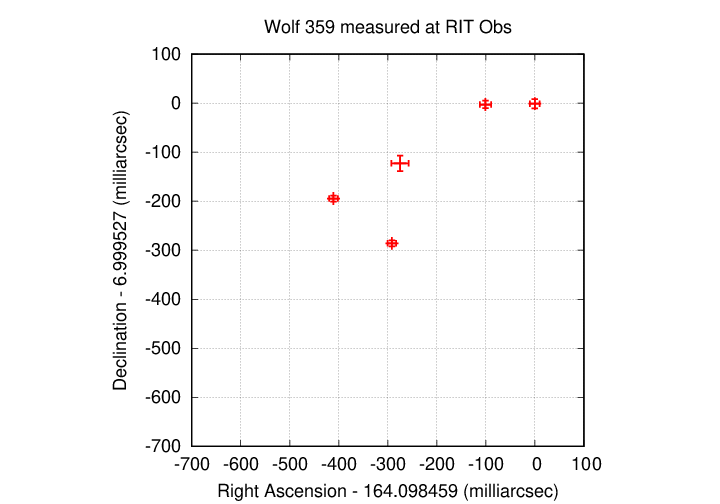
On the night of May 16/17, 2020, under dark but cirrus-y skies, I acquired more astrometry of Wolf 359, as part of the the New Horizons parallax project (and to test my ability to do astrometry).
As described in the New Horizons Parallax Program,
On April 22 and 23, New Horizons will take images of two of the very nearest stars, Proxima Centauri and Wolf 359. When combined with Earth-based images made on the same dates, the result will be a record-setting parallax measurement yielding 3D images of these stars popping out of their background star fields that the New Horizons project will share with the public.
I have taken image of this field earlier:
I decided to take another set of images, in order to check my measurement routines.
The main setup was:
Notes from the night:
Before taking any real data, I decided to try adjusting the collimation screws on the front of the Meade LX-200's secondary housing. The PSF has been very slightly lopsided for a while, and I wondered if I could improve it. I used the main CCD camera in continuous-image mode while pointing at Regulus. I made small adjustments to two of the screws. The picture below shows the before and after images:

I guess it's a bit better. When I did the usual focus check, the FWHM was reported as just 1.5 pixels! Usually, the value is around 2.5 or 3.0 pixels, so this might be evidence for an improvement. We'll just have to see over the next few weeks.
I took a photo of the finder TV's screen when pointing to Wolf 359; this could be a useful reference for the future:

The object WAS located at this position in 2000,
RA = 10:56:28.8 Dec = +07:00:52 (J2000)
but since it has such high proper motion (about 4.5 arcsec per year), it is now closer to RA = 10:56:23.6 and Dec = +06:59:58.3
A chart of the field is shown below. The size of the chart is about 41 x 27 arcminutes. The noisy area at right (West) is the shadow of the guider's pickoff mirror.

I've marked the location of several comparison stars, which also appear in light curves below. In particular,
star UCAC4 B V r ----------------------------------------------------------- A 485-052029 10.530 10.157 10.122 -----------------------------------------------------------
I took a series of 50 exposures of the field, using the R-band filter and an exposure time of 20 seconds. The field wasn't too low in the sky.
The FWHM values hover around 3.0 pixels, which is smaller than usual. Maybe the collimation helped.

The sky values over this short run suggest some light clouds passed through during the observations ...

... as do the image zero-point measurements, based on ensemble photometry.

Using the same techniques as described for earlier nights, I matched detected stellar positions to the Gaia DR2 catalog; this time, I used a linear model and included all stars in the catalog. The resulting positions show a continuing mildly significant change in position.
The measurements look a bit ratty if we plot one symbol for the position determined in each image ...

If we plot the mean of the positions for each night, the pattern is ... not so great. We ought to see a nearly linear progression from night to night, but the two most recent measurements show a sort of bifurcation.

It's clear that
It is possible that the changes I made to the collimation might have caused the position to take a "jump" tonight, compared to the earlier ones. I guess I'll have to hope that it did.
Last modified 5/17/2020 by MWR.